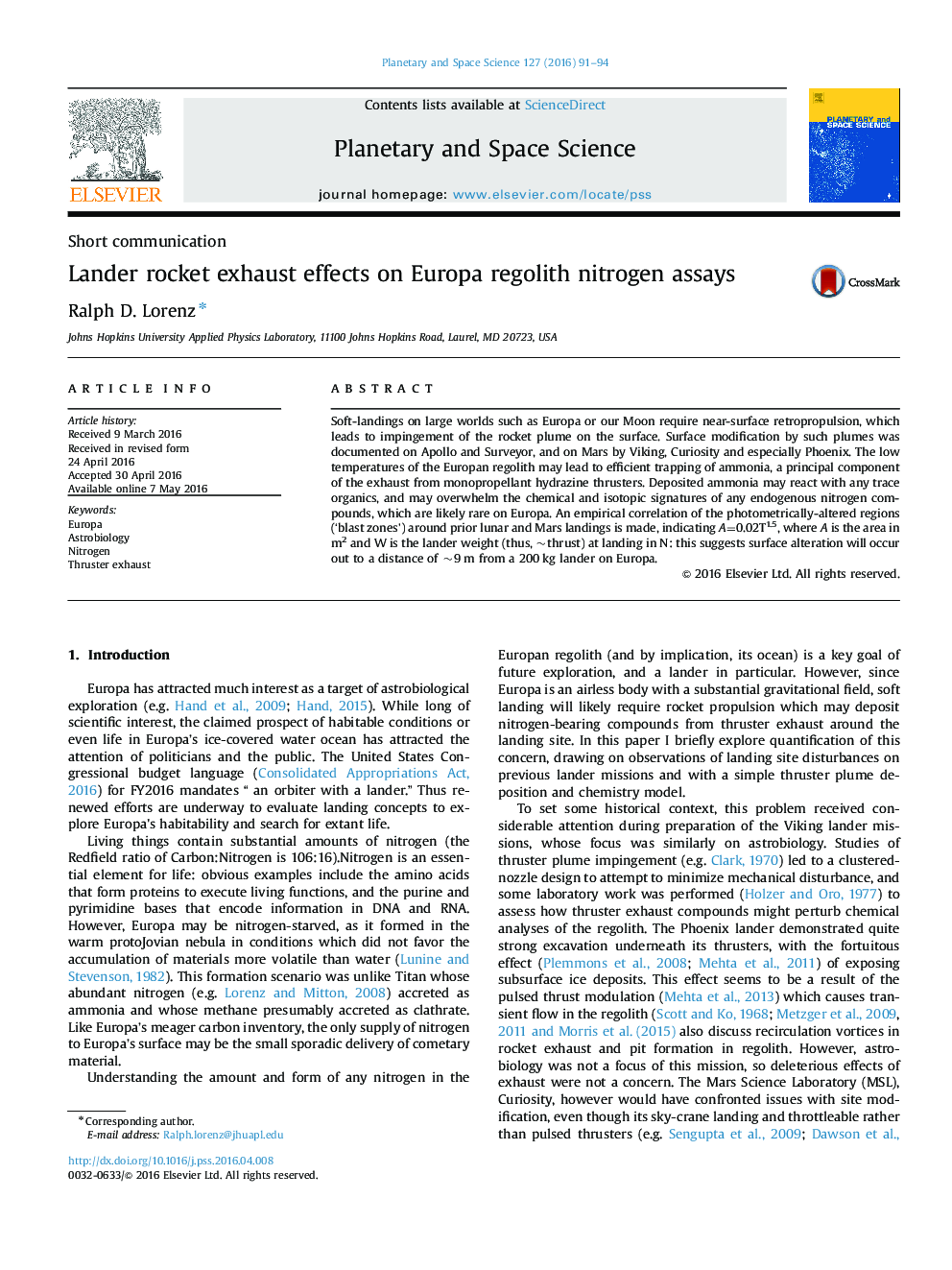| Article ID | Journal | Published Year | Pages | File Type |
|---|---|---|---|---|
| 8142657 | Planetary and Space Science | 2016 | 4 Pages |
Abstract
Soft-landings on large worlds such as Europa or our Moon require near-surface retropropulsion, which leads to impingement of the rocket plume on the surface. Surface modification by such plumes was documented on Apollo and Surveyor, and on Mars by Viking, Curiosity and especially Phoenix. The low temperatures of the Europan regolith may lead to efficient trapping of ammonia, a principal component of the exhaust from monopropellant hydrazine thrusters. Deposited ammonia may react with any trace organics, and may overwhelm the chemical and isotopic signatures of any endogenous nitrogen compounds, which are likely rare on Europa. An empirical correlation of the photometrically-altered regions ('blast zones') around prior lunar and Mars landings is made, indicating A=0.02T1.5, where A is the area in m2 and W is the lander weight (thus, ~thrust) at landing in N: this suggests surface alteration will occur out to a distance of ~9Â m from a 200Â kg lander on Europa.
Keywords
Related Topics
Physical Sciences and Engineering
Earth and Planetary Sciences
Geophysics
Authors
Ralph D. Lorenz,
